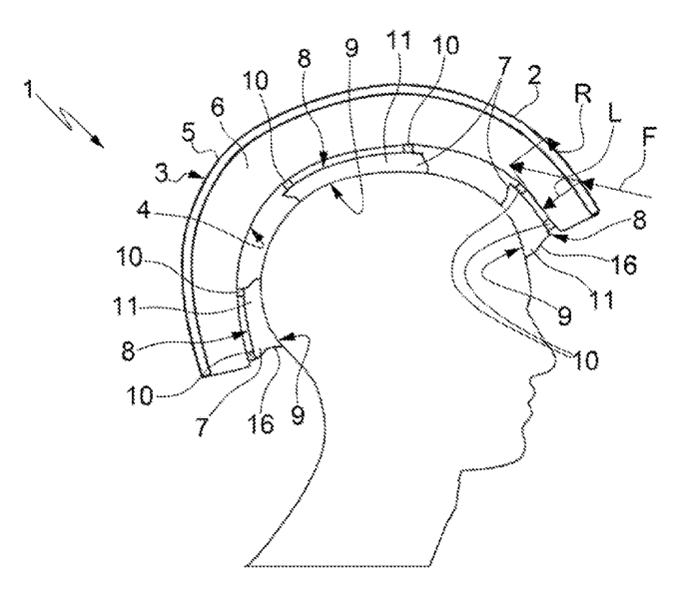Best in the World: Patents at the Forefront of Sports and Technology
DecathaLAW Series: Article 4

Olympians are typically celebrated for their physical achievements—but some are also inventors who have contributed to innovation in the sporting world. One notable example is Ted Ligety, an alpine skier who earned gold medals in both the 2006 Turin Olympics and the 2014 Sochi Olympics. Ligety holds two patents for protective equipment designed to safeguard athletes. One of those patents, U.S. Patent No. 10,143,258, titled “Protective Helmet,” aims to reduce head trauma by incorporating multiple layers of padding to absorb impact during sporting activities. The patented helmet, reproduced below, showcases Ligety’s dedication to athlete safety.

Other Olympians have ventured into fields aside from sports with their inventions. James “Jimmy” LuValle, a black athlete and chemistry major at UCLA, earned a bronze medal in the 400-meter race at the 1936 Berlin Olympics. After returning from the Olympics and graduating from UCLA, LuValle pursued a subsequently successful career in the photography industry, eventually receiving thirteen patents. His inventions, including advancements in film, such as X-ray film for medical diagnostic purposes, have helped revolutionize the film industry. Although not directly related to sports, LuValle’s contributions to X-ray technology are vital for the treatment and prevention of injuries to athletes, highlighting the broader impact of his work.
Even the Olympic torch, a symbol of the Games, has seen innovative advancements. The 2020 Tokyo Olympic torch, patented in the United States as U.S. Patent No. 11,555,584, granted in 2023, is a testament to creative engineering. Designed to resemble a cherry blossom, the torch was crafted from aluminum recycled from temporary housing built after Japan’s 2011 earthquake. Featuring tapering and radial lines, the torch’s unique design was used for 121 days during the Olympic torch relay, culminating in its arrival at the Olympic Stadium for the opening ceremony in Tokyo. This innovative design underscores the blend of modern technology and tradition in Olympic symbols.
Patents can cover a wide range of technologies, including technologies specific to Olympic sports. Despite widespread participation in these events by athletes, coaches, and other sports enthusiasts, securing patents for related technologies is possible.

For example, the United States Patent and Trademark Office (USPTO) commonly classifies gymnastics equipment under CPC areas A63B (apparatus for physical training, gymnastics, swimming, climbing, or fencing; ball games; training equipment), and specifically A63B 6/00 (mats or the like for absorbing shocks for jumping, gymnastics, or the like) and A63B 7/00 (freely-suspended gymnastic apparatus). Based on data pulled from the Patent Public Search Console, from 2001 to 2024, 288 published patent applications have been filed in these classifications, with 189 becoming granted patents. Similarly, for common swimming classifications A63B 33/00 (swimming equipment attachable to the head, e.g., swim caps or goggles) and A63B 33/002 (swimming goggles), 177 patents were filed during the same period, with 91 being granted. These statistics reveal a more than 50% chance of obtaining a patent for gymnastics or swimming equipment, indicating significant innovation in these fields. Moreover, there are many other classes and subclasses of the U.S. and non-U.S. Patent Offices in which innovations for sports performed in the Olympics are categorized.
Olympians are not just champions on the field; many are also trailblazers in technology and innovation. From Ted Ligety’s protective helmets to James LuValle’s groundbreaking work in film, these athletes demonstrate that their impact extends far beyond their sporting achievements which shows how these elite athletes are truly gifted in both body and mind. As patent trends in Olympic sports reveal, there is opportunity for further technological advancement on and off the field.


Special thanks to Rachel Vierra, a Foley summer patent engineer in the Boston office, for her contributions to this article.

